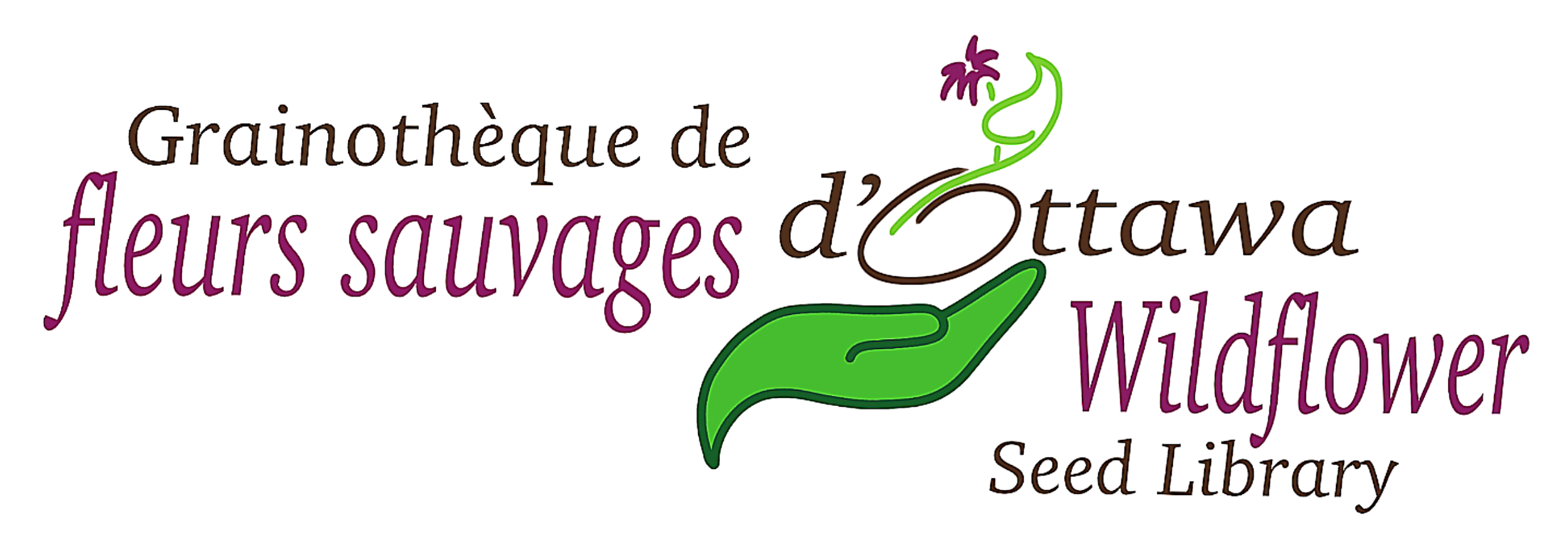Once you’ve done the prep work to remove invasive plants and any unused lawn, you can start adding native plants to your gardens!
This can be as simple as starting to add native plants where space is available in your existing gardens, and then gradually replacing non-native, non-invasive plants with native plants. Browse through our catalogue to find native alternatives to your non-native plants, or ask in the Facebook group for suggestions.
Or, plan out your native plant garden using the suggested steps below to design your space and select native plants for your conditions.
Step 1: Learn your municipal restrictions.
If you are in Ottawa, consult geoOttawa to learn more where the Right of Way (ROW) is on your property. Consult this residential gardening webpage by Wild Pollinators Partners to learn more about what restrictions apply.
Step 2: Start by mapping your main features.
Define the contour of your garden, and where you will put any water features, rocks, etc.
Step 3: Identify your conditions.
Determine how many hours of direct sunlight you get:
- Full sun = 6+ hours
- Part shade = 3-4 hours
- Full shade = less than 3 hours
Also, establish how music moisture your soil captures:
- Dry = water runs through after rain
- Medium = holds water but for a short period of time
- Wet = stays damp parts of the year or all year
FInally, determine what kind of soil you have:
- Sand = larger particles that drain water fast
- Clay = smaller particles that retain some water and harden when dry
- Loam = mix of sand and clay
Step 4: Select your trees, then shrubs, then plants and grasses.
Start with your larger greenery and work your way down to smaller.
Step 5: Select plants that will provide continuous and various blooms throughout the year.
There are three blooming seasons: spring, summer and fall. Continuous blooms means that insects will have food year-round. It also ensures that you will always have something attractive to look at in your garden.
Different bloom sizes support different life forms. Hummingbirds prefer tubular shapes, small bees prefer smaller blooms. Ensuring a variety of colours and sizes blooms will make sure your garden feeds a diversity of wildlife.
Step 6: Put smaller plants in the front, taller plants in the back.
Gradually going from shorter to taller will ensure that your garden will look organized.
Step 7: Plant a minimum of 3-5 plants of the same species together.
Chunks of plants will look better to the human eye, and will also shorten the trip taken by insects for food. Win win.
Step 8: Consult design templates:
The following can help you design your space:
- Design Elements & Principles, Canadian Wildlife Federation
- Design Templates, Halton Master Gardeners
- Designing and Planting with Native Plants webinar, New York – New Jersey Trail Conference
- Designing with Common Nursery Plants,
Benjamin Vogt - DIY Garden Designs, Audubon Pennsylvania
- Garden Design in Under 2 Minutes, Benjamin Vogt
- Grow Native! Designing with Native Plants with Ronda Burnett, Missouri Prairie
- How to Design a Dementia-Friendly Garden, Sensory Trust
- How to Design a Sensory Garden, Sensory Trust
- Native Plant Gardening and Design, Land Conservancy of McHenry County
- Native Garden Templates, Pennsylvania Department of Conservation & Natural Resources
- Plant Paradise Toolkit, Hamilton Pollinator Paradise Project
